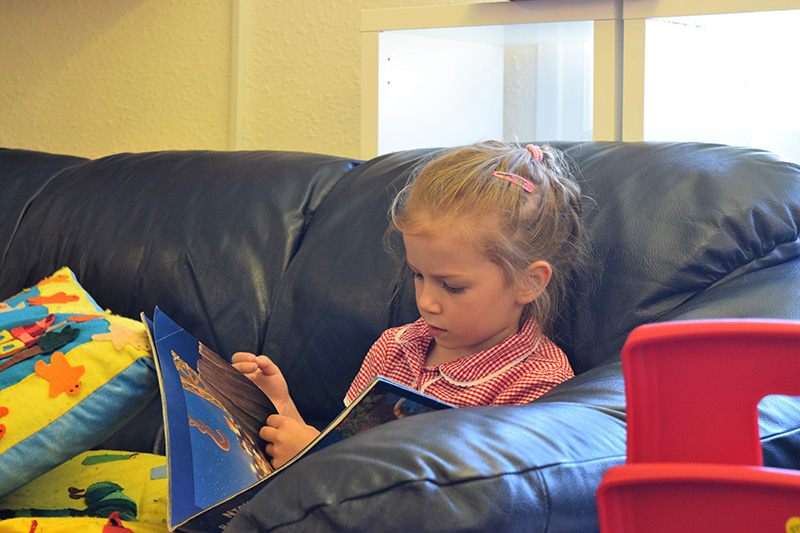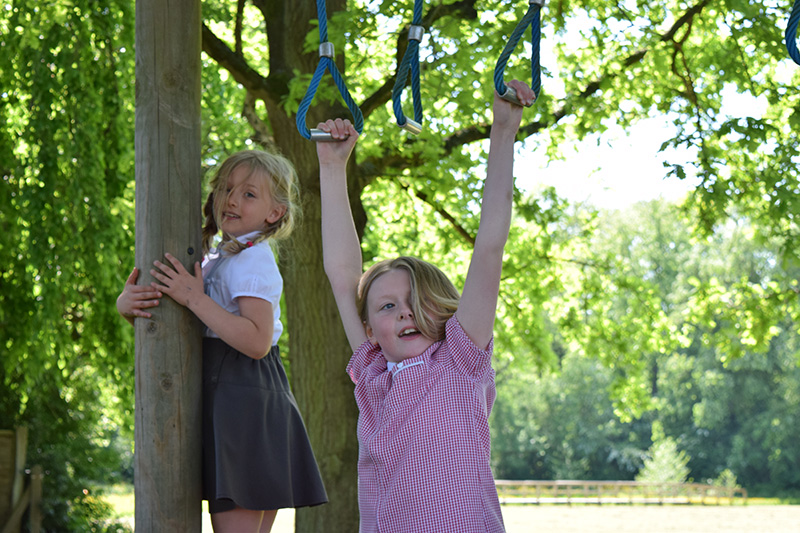Phonics and Early Reading at High Lane
How are Phonics and Early Reading Taught?
Our curriculum promotes a love of reading, through events, a wide range of teaching resources and texts to engage readers. Children regularly visit the school library and are encouraged to enjoy choosing books to read and share. Pupils continually use their reading skills to research and apply knowledge across the curriculum and into their writing.
We see early reading as an essential skill and place a strong emphasis on supporting all children to become confident readers at a young age.
Phonics at High Lane
Intent
Phonics at High Lane offers a consistent whole school approach to ensure phonics skills are progressively covered and embedded to meet the needs of all our pupils. When developing our bespoke phonics programme, the context of our school and knowing our learners was at the heart of all decisions. The structure is based on Letters and Sounds, with adaptations and enhancements made to ensure a complete and systematic teaching framework which meets the requirements of the National Curriculum and the Government's Essential Core Criteria. The approach ensures that the content delivered is relevant to the age and needs of each individual pupil to ensure all children are given a ‘solid base upon which to build as they progress through school’ and to ‘help children to develop the habit of reading widely and often, for both pleasure and information.’ (Validation of a systematic synthetic teaching programmes: supporting documentation October 22)
Implementation
By following our consistent whole school approach, subject leads and teachers feel confident that the curriculum design and delivery ensures all pupils’ needs are met. Where gaps in pupils’ skills are identified, extra sessions are used to support the pupils’ progress. Where necessary, discussion and support with the SENDCo will be had.
Our phonics progression documents indicate how phonics is structured at High Lane and what each lesson looks like. The cycle of each phonics session is reviewed annually or more frequently if needed. This is disseminated to all staff through staff meetings and/or modelled sessions. Resources to support the delivery of phonics have been carefully created to support consistency and quality of teaching and learning with the use of technology considered where appropriate.
Each lesson from Reception to Year 2 follows the same format over 5 days:
- Four lessons following the same structure introducing new GPC/NC Objectives
- One HFW lesson based on children identifying what is ‘tricky’ about the word.
- Handwriting, letter formation and posture is delivered discreetly and within phonics sessions. Letter stories are taught to children to help with their letter formation and joins are introduced within phonics sessions alongside diagraphs, trigraphs and quads.
Prior to the introduction of systematic phonics teaching, we feel activities to develop children’s listening and attention, phonological awareness and interest in sounds are extremely important to get them ready for structured phonics progression beginning in Reception. Therefore, in Nursery, specific skills are taught related to one of the seven aspects of Phase 1: environmental sounds, instrumental sounds, body percussion, rhythm and rhyme, alliteration, speech and sound discrimination and oral blending and segmenting. Children develop these skills through carefully planned daily phonics and experiences in continuous provision.
We strongly believe that to prepare our youngest learners for phonics and early reading, they need to develop an understanding that: a word/shape carries a meaning, how to hear words broken into chunks, that words sound different but can have some similarities and enjoy and explore rhythm, rhyme, pattern and pulse.
As a school, we feel that this curiosity within oracy is so important that we have embedded this into all our daily phonics sessions and continue this through vocabulary work in KS2.
Phonics and Key Stage 2
Where necessary, Key Stage 2 pupils with a need in phonics may join Key Stage 1/Year 3 phonics sessions. Where this is not appropriate, intervention programs are put into place with a suggested structure linking spelling and phonics.
Key Stage 2 staff use the Spelling Shed scheme as the basis of their spelling sessions. This allows staff to recap phonics and link the application of choosing correct graphemes into their writing. Children in Year 3 use a hybrid system whereby the KS1 structure is continued partially or entirely (cohort dependent) to ensure that their phonics application in reading and spelling is secure before moving onto the Spelling Shed program.
Application Outside a Phonics/Spelling Session
Children are encouraged, whenever reading or writing, to deploy the taught strategies from within the phonics/spelling sessions.
- When reading, the children (depending on their phonics stage) will use: segmenting and blending strategies to work out unfamiliar words, picture cues, reading on strategies, previous knowledge or experiences, root/base words to aid reading.
- When spelling, the children (depending on their phonics stage) will use: syllable count, phoneme buttons, grapheme charts, class displays (e.g. grow your code), personalised spelling charts, HFW charts, etymology or dictionaries to aid spelling.
Home/School Reading Books
We recognise and value the significant role of parents in further developing reading skills. There are two types of reading book that children will bring home:
- A reading practice book – This will be at the correct phonic level for each child. They should be able to read this fluently and independently. Once beyond Phonic Phase 5, children will bring home two reading books.
- A sharing book - Each child may not be able to read all this book on their own as it is not fully decodable and may not match their exact phonics level. This book is for adults and children to read and enjoy together. These become independent reading books from Turquoise level onwards.
- Alongside this the children will also borrow from our school library.
Impact
The impact of a shared, consistent approach will be seen across the school with an increase in phonics screening scores, reading scheme/free reading levels, reading attainment throughout the school and with the children’s desire to read for pleasure and seek information. As the children’s reading progresses, we will see their comprehension also improve due to the children’s reading fluency. A focus within the phonics structure on writing will begin the spelling journey for our pupils. By teaching joins through phonemes and spelling patterns, we also believe that this will have a positive impact on spelling.

